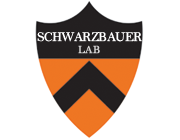Differential targeting of recombinant fibronectins in AtT-20 cells based on their efficiency of aggregation
Type
In pituitary-derived AtT-20 cells, recombinant fibronectin containing the N-terminal matrix assembly domain and the C-terminal half of fibronectin does not follow the regulated secretory pathway but instead concentrates in distinct organelles prior to secretion. These organelles are larger than the dense-core granules and localize to the cell body at sites that differ from lysosomes, endosomes and endoplasmic reticulum. Unlike the dense-core granules, their discharge is not stimulated by 8-bromo-cyclic-AMP or phorbol esters. The kinetics of intracellular transport and secretion of the recombinant fibronectin suggest that it is present in a post-Golgi pool that turns over more slowly than constitutive vesicles. Indeed, the fibronectin-containing organelles disappear with a half-time of 3 hours after inhibiting protein synthesis. Presence of the organelles correlates with intracellular aggregation of dimeric fibronectin polypeptides. The organelles are absent in cells expressing monomeric recombinant fibronectin (lacking C-terminal dimerization sites) or the C-terminal half of fibronectin (which dimerizes but lacks the N-terminal matrix assembly domain), both of which aggregate less efficiently than dimeric fibronectin. Instead, the latter polypeptides enter the dense-core granules. Thus while the formation of the fibronectin-containing organelles may require efficient aggregation, it may not require a specific structural signal. Moreover, efficient aggregation is not necessarily a prerequisite for following the regulated pathway.

